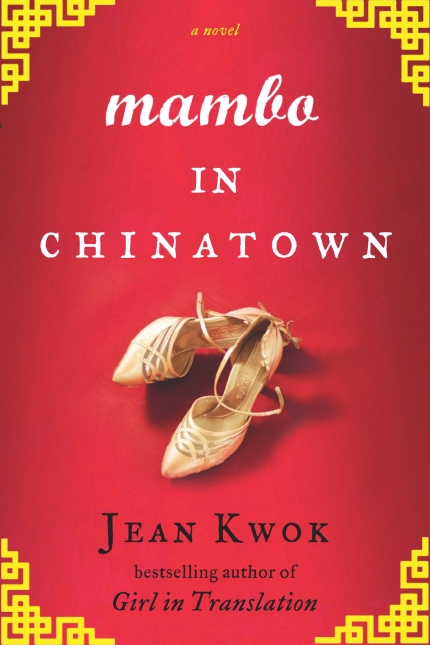Mambo in Chinatown: A Novel
- By Jean Kwok
- Riverhead Books
- 384 pp.
- Reviewed by Rachel Cain
- August 20, 2014
A Chinese American family is torn between their Eastern traditions and Western culture.

For immigrant families coming to America, cultural traditions are vital for maintaining ties to their home country. But, as explored in Jean Kwok’s latest book, Mambo in Chinatown, sometimes it is just as important to branch out and see what the new world has in store. Mambo in Chinatown follows Charlie Wong’s journey to establish balance between her often seemingly contradictory Chinese and American identities as she trains as a professional ballroom dancer.
Twenty-two-year-old Charlie lives in a cramped New York Chinatown apartment with her widowed father and younger sister. With a slew of botched receptionist jobs behind her, Charlie manages to secure a position as a receptionist at Avery Dance Studios. She loves her new job because the dancers remind her of her mother, who had been a star ballerina with the Beijing Dance Academy before immigrating to America with Charlie’s father. However, Charlie must keep her new job a secret from her father, who is wary of any Western conventions, including Western dancing.
When Charlie accidentally double-books one of the teachers for a beginner’s class, she finds herself volunteering to teach the session in order to make amends for her mistake. The other dancers agree to this unconventional plan after they realize Charlie’s body is perfectly suited for dancing, with her toned muscles from her previous dishwashing job and the perfectly arched feet she inherited from her mother. And, as one of the other instructors observes about a beginner’s class, “All we do is show them a few basic steps. A walrus could teach the class and they wouldn’t know the difference.”
Relying on a crash course in ballroom dancing and experience as an instructor in tai-chi, Charlie’s class is a success. She soon leaves her receptionist job to work as a professional ballroom dancer at the studio. As she progresses in her training, she and one of her students, Ryan, decide to prepare for a competition together.
As Charlie becomes more involved in the world of ballroom dancing, she undergoes changes both inwardly and outwardly. She becomes more confident and begins to wear more make-up, gets a new haircut, and trades in her hand-me-downs for clothes that fit her body better. However, although the wardrobe helps her fit in with the other ballroom dancers, her father and godmother disapprove of Charlie’s new look.
Charlie feels as though she inhabits two different worlds: the eastern traditions of Chinatown, and the new Western conventions of the dance studio. However, Charlie discovers dance itself is neither completely Western nor Eastern but, like herself, includes elements of both.
When her dance instructor explains the dynamics of two partners dancing, he says, “What many do not realize is that leading and following are not about one person being in control and one not. It is about yin and yang. It is qi. Necessity.”
Not only must dancers understand yin, yang, and qi to achieve harmony in their dancing, but Charlie must also achieve balance in her life, not allowing her Eastern or Western identities to overwhelm the other.
Meanwhile, Charlie’s younger sister becomes seriously ill. As Charlie’s family searches for the right care for the sister, Charlie also worries about her romantic attraction to one of the dance students. If the two begin a romantic relationship, she could lose her job.
In the end, all the plot points are tied up neatly, perhaps a little too neatly. Events often, if not always, ultimately resolve themselves in Charlie’s favor. Although this made elements of the plot rather predictable, Kwok’s engaging writing style kept me turning the page to see what happened next. Overall, the book is a very charming read. What I enjoyed most are Kwok’s descriptions of the dance routines. Kwok herself worked as a professional ballroom dancer, which may be how she is able to create such vibrant and colorful scenes between the dancers. And, when I turned the final page, I wanted to learn to dance myself.
Rachel Cain studies English literature and international journalism at the University of Dayton. She also works with Street Sense, DC’s homelessness advocacy newspaper.

